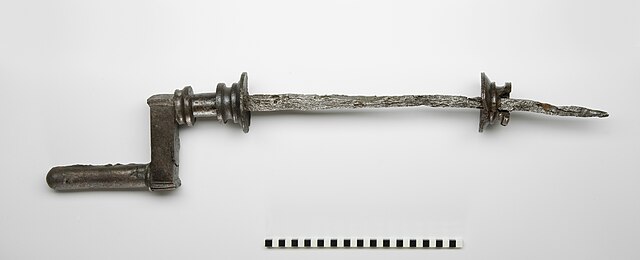A reel is a tool used to store elongated and flexible objects by wrapping the material around a cylindrical core known as a spool. Many reels also have flanges around the ends of the spool to help retain the wrapped material and prevent unwanted slippage off the ends. In most cases, the reel spool is hollow in order to pass an axle and allow it to spin like a wheel, a winding process known as reeling, which can be done by manually turning the reel with handles or cranks, or by machine-powered rotating via motors.
A 250 V 16 A electrical wire on a reel
An irrigation reel with travelling sprinkler
A badge reel
35mm film reels and boxes
A crank is an arm attached at a right angle to a rotating shaft by which circular motion is imparted to or received from the shaft. When combined with a connecting rod, it can be used to convert circular motion into reciprocating motion, or vice versa. The arm may be a bent portion of the shaft, or a separate arm or disk attached to it. Attached to the end of the crank by a pivot is a rod, usually called a connecting rod (conrod).
A compound crank
Hand crank on a pencil sharpener
Tibetan operating a quern (1938). The upright handle of such rotary handmills, set at a distance from the centre of rotation, works as a crank.
Roman crank handle from Augusta Raurica, dated to the 2nd century AD








